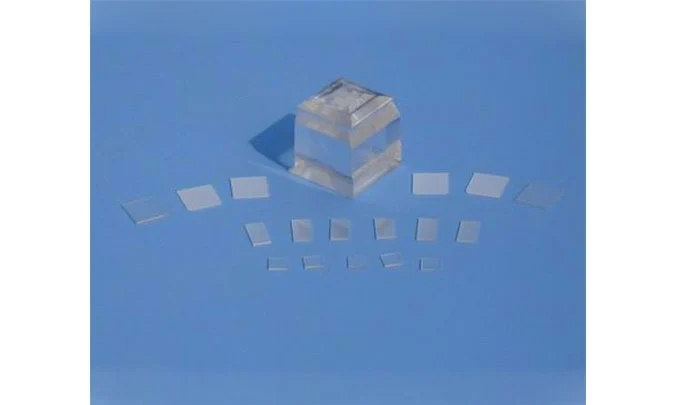Infrared imaging technology is a modern technology that plays an important role in various fields such as military, scientific research, medical, and industrial. Among them, KBr substrate, as a key component in infrared imaging systems, its importance cannot be ignored. This article will discuss the important role of KBr substrate in infrared imaging technology.
KBr, namely potassium bromide, is a commonly used infrared window material. It has characteristics such as high transmittance, low absorption, excellent thermal stability, and chemical stability, which make it highly favored in infrared imaging technology. The high transmittance of KBr substrate means they can allow more infrared light to pass through, thereby improving the clarity and sensitivity of the imaging. At the same time, the thermal stability and chemical stability of KBr substrate ensure that they can maintain stable performance in various complex environments.
Infrared detectors are the core components of infrared imaging systems and are responsible for converting the received infrared radiation into electrical signals. As the window material of infrared detectors, the high transmittance characteristic of KBr substrate enables infrared radiation to efficiently enter the detector, thereby improving the sensitivity of the detector. In addition, the thermal stability and chemical stability of KBr substrate also guarantee the stability and reliability of the detectors under various environmental conditions.

In infrared imaging systems, KBr substrate serves not only as window materials for detectors but also plays a critical role in shielding detectors from external environmental influences. Since infrared imaging systems often operate in complex conditions, such as high temperatures, high humidity, and severe pollution, the chemical and thermal stability of KBr substrate becomes particularly significant. These properties allow KBr substrate to effectively protect detectors from environmental corrosion, ensuring their proper functionality and long-term stability.
With the continuous advancement of infrared imaging technology, the demands on KBr substrate are becoming increasingly stringent. Looking ahead, we can anticipate further breakthroughs in several areas. First, improving transmittance to achieve higher image clarity and sensitivity. Second, enhancing thermal and chemical stability to adapt to more extreme working environments. Third, reducing production costs to promote the widespread adoption and application of infrared imaging technologies. Additionally, with the emergence of new materials, we can look forward to the development of more advanced infrared window materials with superior performance, injecting fresh momentum into the evolution of infrared imaging technology.